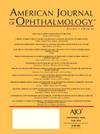Combined Accelerated Crosslinking With Laser In Situ Keratomileusis (LASIK) for Myopic Patients: A Systematic Review and Meta-Analysis
IF 4.1
1区 医学
Q1 OPHTHALMOLOGY
引用次数: 0
Abstract
Purpose
To compare laser in situ keratomileusis (LASIK) and Simultaneous LASIK and accelerated Crosslinking (LASIK Xtra) for myopia correction.
Design
Systematic review and meta-analysis.
Methods
A search of PubMed, EMBASE, Web of Science, the Cochrane Library, and China National Knowledge Internet was conducted up to October 1, 2024 to identify studies comparing LASIK and LASIK Xtra for myopia correction. The outcome of visual acuity and refraction, safety, efficiency, predictability, stability, postoperative corneal thickness and endothelial cell count were measure.
Results
A total of 1,647 eyes (836 LASIK, 811 LASIK Xtra) from 15 studies were included. LASIK demonstrated superior postoperative uncorrected distance visual acuity (UDVA) compared to LASIK Xtra, with a mean difference (MD) of –0.03 (8 studies, n = 750 eyes; 95% CI: –0.04 to –0.01, P = .007) at 1 month and (7 studies, n = 672 eyes; MD= –0.01 95% CI: –0.02 to 0.00, P = .02) for long-term results (≥6 months). No significant differences were found in corrected distance visual acuity (CDVA; 6 studies, n = 530 eyes; MD = 0.00, 95% CI: –0.01, 0.00, P = .32), spherical equivalent (14 studies, n = 1639 eyes; MD = 0.03, 95% CI: −0.03, 0.08; P = .40), safety (8 studies, n = 779 eyes; odds ratios [OR]= 0.70; 95% CI: 0.39, 1.26; P = .23), efficiency (11 studies, n = 921 eyes; OR = 0.75, 95% CI: 0.54, 1.05, P = .10), predictability (11 studies, n = 971 eyes; OR= 1.03, 95% CI: 0.72, 1.47, P = .86), stability (3 studies, n = 90 eyes; OR = 0.70, 95% CI: 0.21, 2.28, P = .55). Subgroup analysis indicated a higher risk of postoperative CDVA loss in the Ectasia Risk Group undergoing LASIK-Xtra (OR= 0.20, 95% CI: 0.04 to 0.97, P = .05). The 30 mW/cm² for 90 seconds (2.7 J/cm²) irradiation protocol in LASIK Xtra may resulted in worse UDVA compared to LASIK (MD= –0.01, 95% CI: –0.03 to –0.001, P = .05). The certainty of evidence for the outcomes ranged from "low to very low".
Conclusions
Current evidence suggests that LASIK offers a statistically significant advantage in UDVA compared to LASIK Xtra, especially when LASIK Xtra irradiation protocol of 30 mW/cm² for 90 seconds (2.7 J/cm²) is applied. However, given the low to very low certainty of evidence, these findings require cautious interpretation and further confirmation through long-term studies.
加速交联联合激光原位角膜磨镶术(LASIK)治疗近视患者:系统回顾和荟萃分析。
目的:比较激光原位角膜磨镶术(LASIK)与同步LASIK +加速交联(LASIK Xtra)在近视矫正中的应用效果。设计:系统回顾和荟萃分析。方法:检索截至2024年10月1日的PubMed、EMBASE、Web of Science、Cochrane Library和中国国家知识互联网,找出比较LASIK和LASIK extra近视矫正的研究。观察术后视力、屈光、安全性、有效性、可预测性、稳定性、角膜厚度、内皮细胞计数等指标。结果:共纳入15项研究的1647只眼(836只LASIK, 811只LASIK Xtra)。与LASIK Xtra相比,LASIK显示出更好的术后未矫正距离视力(UDVA),平均差值(MD)为-0.03(8项研究, = 750眼;95%可信区间[CI]: -0.04 ~ -0.01, P = 0.007)和(7项研究,n = 672只眼睛;长期结果(≥6个月)的MD= -0.01, 95% CI: -0.02 ~ 0.00, P = 0.02)。两组矫正距离视力(CDVA;6项研究,n= 530只眼睛;MD= 0.00, 95% CI: -0.01, 0.00, P = 0.32),球形当量(14项研究,n= 1639只眼;Md = 0.03,95% ci: -0.03, 0.08;P =0.40),安全性(8项研究,n= 779眼;优势比[OR]= 0.70;95% ci: 0.39, 1.26;P = 0.23),效率(11项研究,n= 921眼;OR= 0.75, 95% CI: 0.54, 1.05, P = 0.10),可预测性(11项研究,n= 971眼;OR= 1.03, 95% CI: 0.72, 1.47, P = 0.86),稳定性(3项研究,n= 90眼;Or = 0.70, 95% ci: 0.21, 2.28, p = 0.55)。亚组分析显示,扩张风险组行LASIK-Xtra术后CDVA损失风险较高(OR= 0.20, 95% CI: 0.04 ~ 0.97, P=0.05)。在LASIK Xtra中,30 mW/cm²90秒(2.7 J/cm²)照射方案可能导致UDVA比LASIK更差(MD= -0.01, 95% CI: -0.03至-0.001,P=0.05)。结果证据的确定性从“低到非常低”不等。结论:目前的证据表明,与LASIK Xtra相比,LASIK在UDVA方面具有统计学上显著的优势,特别是当使用30mw /cm²照射90秒(2.7 J/cm²)的LASIK Xtra照射方案时。然而,由于证据的确定性低至极低,这些发现需要谨慎解释,并通过长期研究进一步证实。
本文章由计算机程序翻译,如有差异,请以英文原文为准。
求助全文
约1分钟内获得全文
求助全文
来源期刊
CiteScore
9.20
自引率
7.10%
发文量
406
审稿时长
36 days
期刊介绍:
The American Journal of Ophthalmology is a peer-reviewed, scientific publication that welcomes the submission of original, previously unpublished manuscripts directed to ophthalmologists and visual science specialists describing clinical investigations, clinical observations, and clinically relevant laboratory investigations. Published monthly since 1884, the full text of the American Journal of Ophthalmology and supplementary material are also presented online at www.AJO.com and on ScienceDirect.
The American Journal of Ophthalmology publishes Full-Length Articles, Perspectives, Editorials, Correspondences, Books Reports and Announcements. Brief Reports and Case Reports are no longer published. We recommend submitting Brief Reports and Case Reports to our companion publication, the American Journal of Ophthalmology Case Reports.
Manuscripts are accepted with the understanding that they have not been and will not be published elsewhere substantially in any format, and that there are no ethical problems with the content or data collection. Authors may be requested to produce the data upon which the manuscript is based and to answer expeditiously any questions about the manuscript or its authors.

 求助内容:
求助内容: 应助结果提醒方式:
应助结果提醒方式:


